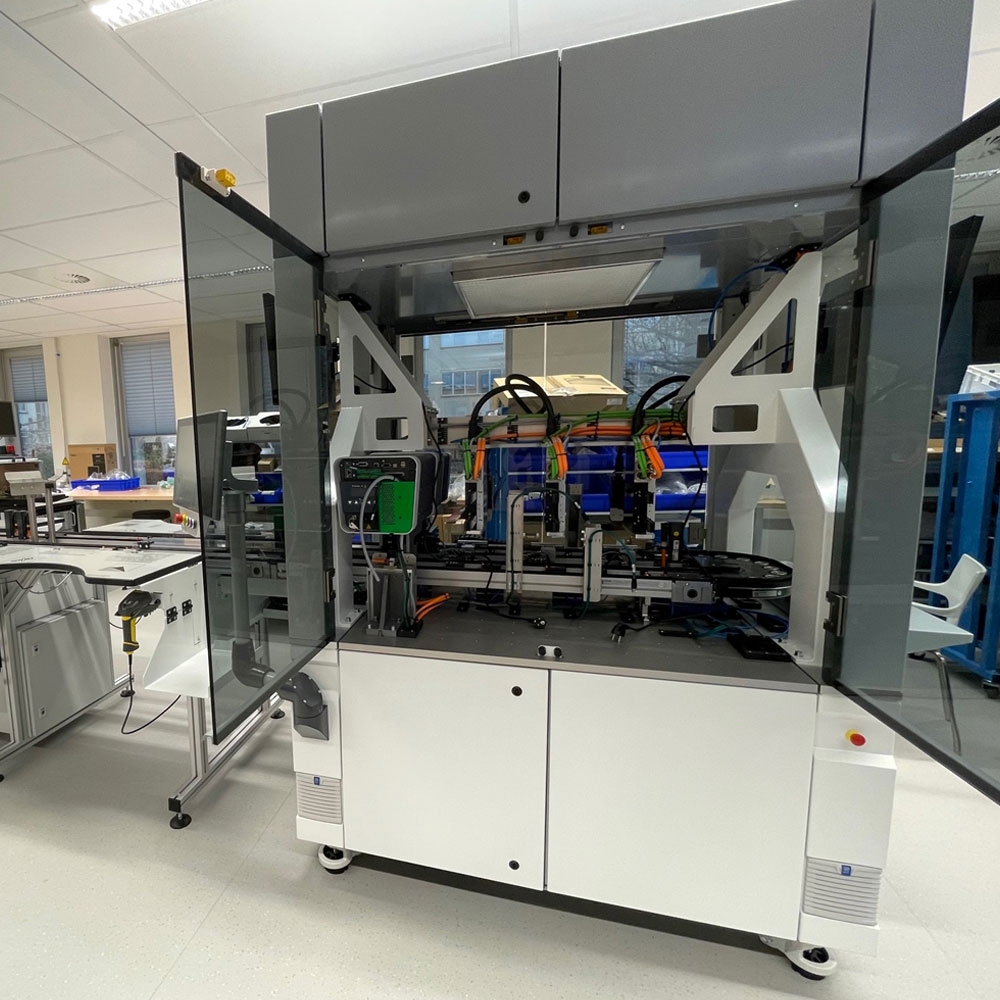
semi-automatic assembly machine.
The PCR test measures enzymatic activity in a sample that may contain Covid-19 genetic material. The sample is inserted into a microfluidic chip that is integrated with a carrier into a test card. The assembly of test cards was initially done manually, but automation was required for the reliable and reproducible production of large numbers. We developed a Research Assembly Tool for the research phase in the development of the Covid-19 PCR test by miDiagnostics. With this semi-automatic version, components infeed and final product outfeed still take place manually.

highlights
- Smart Machine Base and BRIX standard platform
- semi-automatic assembly machine
- easy scale-up to fully automatic
- 5 μm repeat accuracy for component alignment
- 3 sec cycle time
- GMP compliant
- electronic batch record for full traceability
standard platform for hardware and software.
We based the design for the assembly machine on our hardware standard platform, the Smart Machine Base. We provided this with purchase parts (robots, cameras, laser) and specific product holders. A conveyor belt takes product holders past an entry check and then three pick & place robots that carry out the various assembly steps. Finally, a QR code is engraved on each test card for the traceability required for medical products. For the mechatronic control, we used our proprietary BRIX software platform, which, like the SMB, has a modular architecture.
“our biggest challenges were high accuracy and short cycle time.”
Thanks to the efficient use of our standard platform, we were able to spend a lot of time on the technical challenges, particularly high accuracy and short cycle time. For this purpose, we equipped the robots with direct-drive actuators. With vision technology, we were able to achieve a repeat accuracy of 5 μm in chip and carrier alignment. This high accuracy is necessary for a liquid-tight connection. To achieve the specified cycle time of 3 seconds, we used a high-performance PLC for the control.


